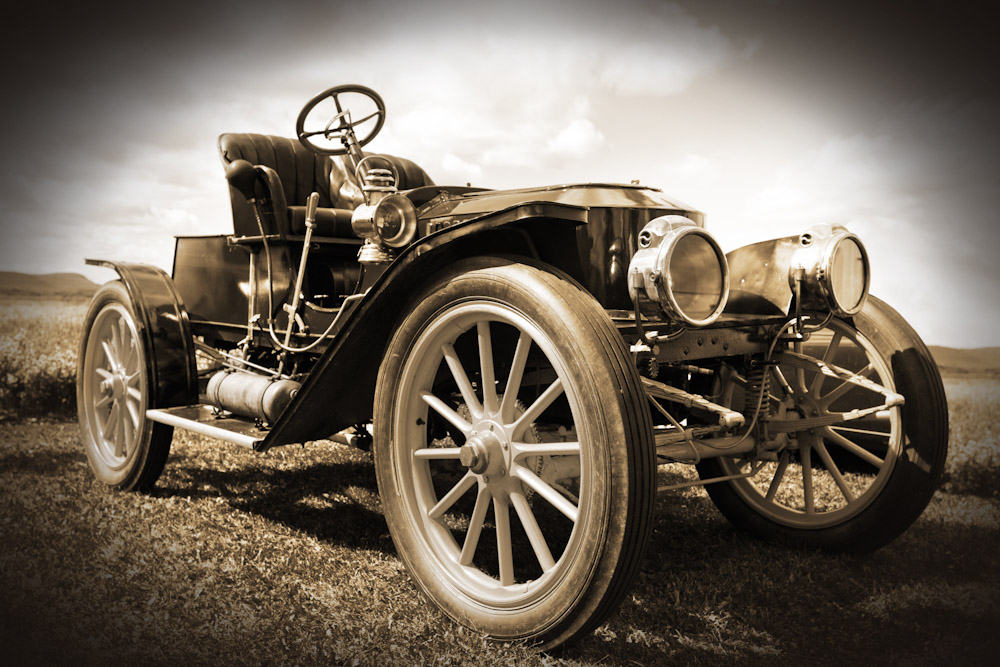
The history of the automobile is the history of man’s obsession with innovation, precision, and, moving really, really fast. From the invention of the wheel to the creation of the internal combustion engine and beyond, there have been gearheads who have dreamed of all the places we’d go.
Of course, one doesn’t have to know the intricate history of the car in order to rely on it for the entirety of their lives — most of us will ever only have a passing knowledge of the famous figures, dates, and models that comprise its past — but increased understanding often leads to increased appreciation, which in turn means drivers take better care of their vehicles. No one likes unexpected trips to their local Riverton car repair center, just the regularly scheduled tune-ups that keep the wheels turning safely.
An Interesting Past
Almost from the outset, the automobile has been more than a tool to get from Point A to Point B; the first self-perpetuating vehicle was given as a gift, after all, to the Chinese Emperor, Xuanye in the 17th Century by a visiting missionary. Even from the beginning, it was a luxury gift meant to impress on birthdays.
Steam was quickly deduced as a good propellant for these first automobiles but after a few centuries of thinking, inventors began to realize that the destiny of the vehicle lie in the creation of other types of systems — systems that would govern more than just the car’s ability to go forward. Thus, by the turn of the 18th century, manufacturers had begun exploring the idea of
- Transmission
- Brakes
- Brake Lights (a system of red flags instead of the electric bulb)
- Electric motors
- Processed fuel
Surely, as soon as the industrial revolution began and machinery was becoming the norm, the car as we understand it today began to take shape. This, naturally, led to the birth of the car repair industry — Master Muffler’s predecessors.
The Age of the Car
As the 20th century dawned, many of the fundamental components of the automobile had been dreamed up and invented, if only in its first iteration (catalytic converters and other clean initiatives wouldn’t be tackled for some time).
As technology improved, so did the application of that technology. At the forefront of these innovations were individuals of great determination who asked a lot of questions and demanded perfection from themselves, their industry, and the automobile itself. Naturally, many of these people would end up going head-to-head with one another, making the 20th-century one alive with the flames of competition.
Competitors
Innovation starts with an idea — the belief that a better version of something has yet to be discovered and therefore must be. Master Muffler believed that there could be a better option for a car repair in Riverton than what existed there previously, so they expanded. Other manufacturers saw how their competitors were conducting themselves and made critical changes to the formula.
Some of these examples become so famous that their initial competition all but gets removed from history, all thanks to a sheer lack of relevance:
- Engines:
- The internal combustion engine was invented by Frenchman Étienne Lenoir in 1860.
- That engine was perfected by German Nicolaus Otto in 1876.
- Otto’s engine was almost immediately challenged by a revolutionary new design from Rudolf Diesel (of the diesel engine) which began in 1878 and received patents in the 1890s.
- Assembly:
- Ransom E. Olds invented a new way to create automobiles quickly, in order to keep up with orders for his new model. It was called the stationary assembly line.
- Seeing the Olds method, Henry Ford invented a moving assembly line where people wouldn’t need to line up to install their part but the car chassis would come to them.
- Fuel:
- John Cassel, a prolific author and businessman, invented “Cazeline oil” for use in lighting lamps.
- In an attempt to capitalize on that association, Irishman Samuel Boyd invented his own Cazeline oil which, due to copyright infringement, he was forced to rename “Gazeline.”
- “Gasoline” then became the term for the oil used to power automobile engines.
As you can see, competition raged over how everything was to be done — which parts were to be used, the proper way to install the parts, and even how the part names were to be spelled! There is similarly very passionate competition today in how those parts are to be serviced.
Master Muffler has become the clear leader in Riverton car repair for decades. Come by and see why we are considered the best in our trade. From emissions to oil changes and more, we will make sure that your favorite toy is always roadworthy.
Related Posts
As an EV owner, understanding your vehicle's battery is critical. From its capacity to its lifespan, and everything in between, we'll guide you through what you need to know to optimize your EV experience. So buckle up and get ready - we're about to shed some light on the electrifying world of EV batteries. What [...]
If your car is running hot, it can be a sign that something’s not right with your engine. Fortunately, diagnosing the cause of an overheating engine isn't too difficult if you know what to look for and how to address it. Keep reading if you want to learn the most common issues that occur when [...]
Your vehicle's exhaust system serves a critical role in managing the byproducts of the combustion process and ensuring optimal engine performance. The appearance of colored smoke from the exhaust pipe, either when stationary or accelerating, can provide valuable clues to underlying mechanical issues. What is a car exhaust? A car exhaust is a system [...]





